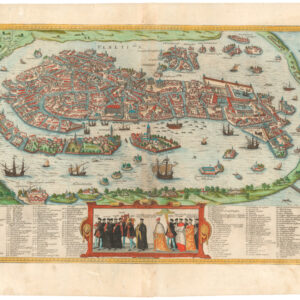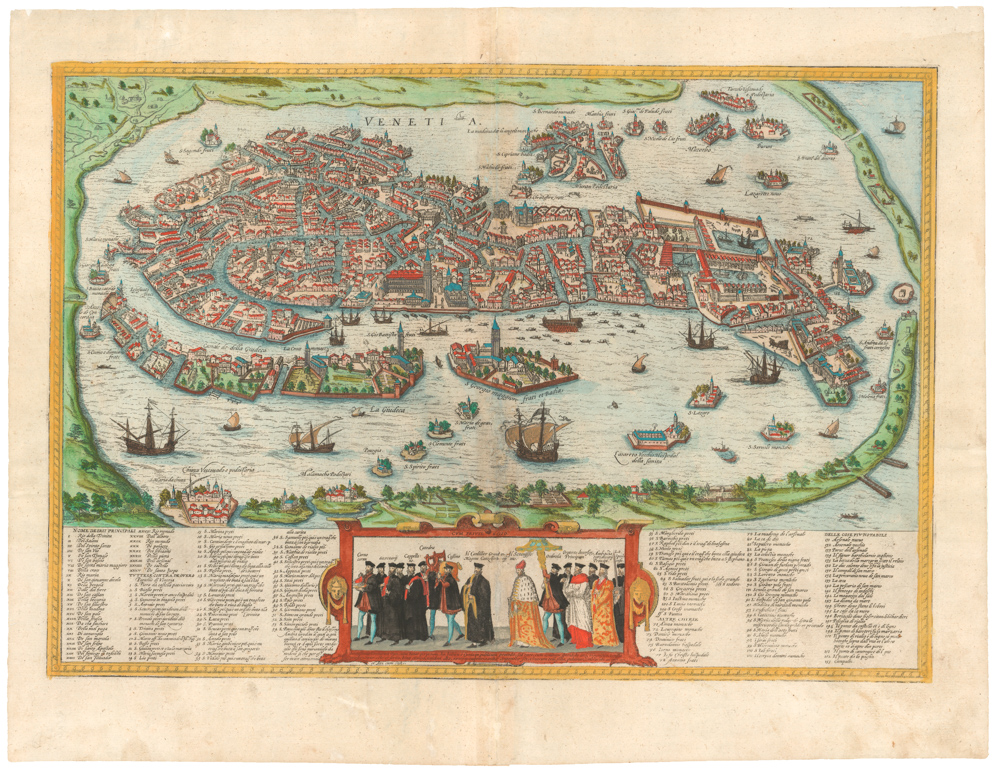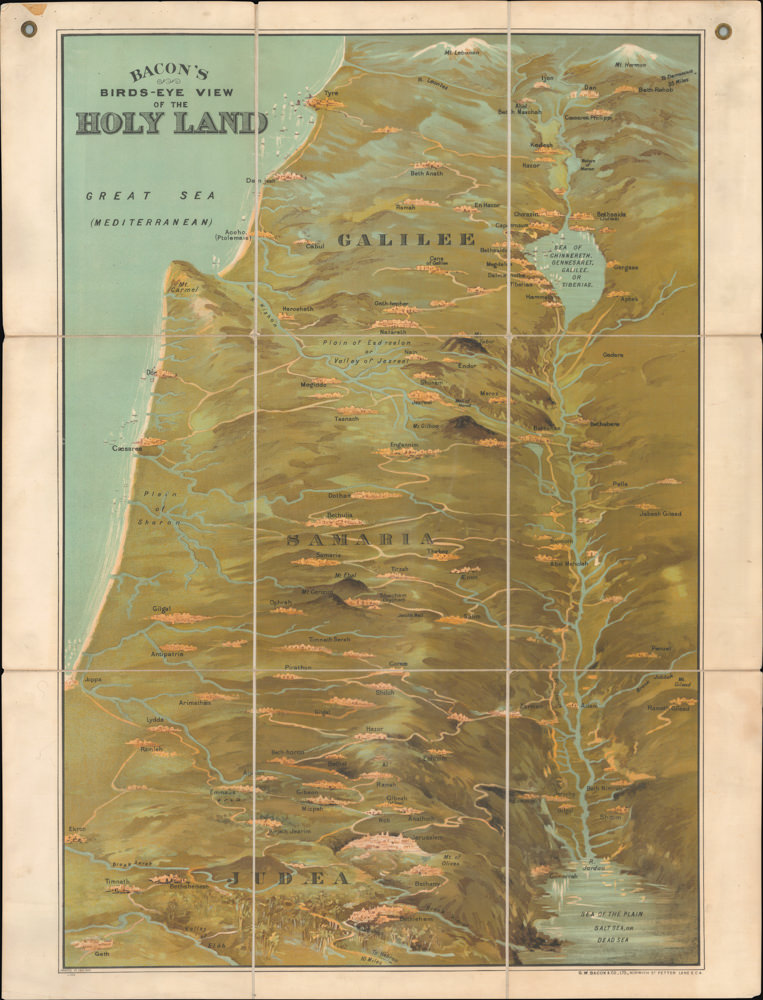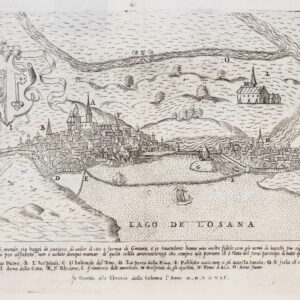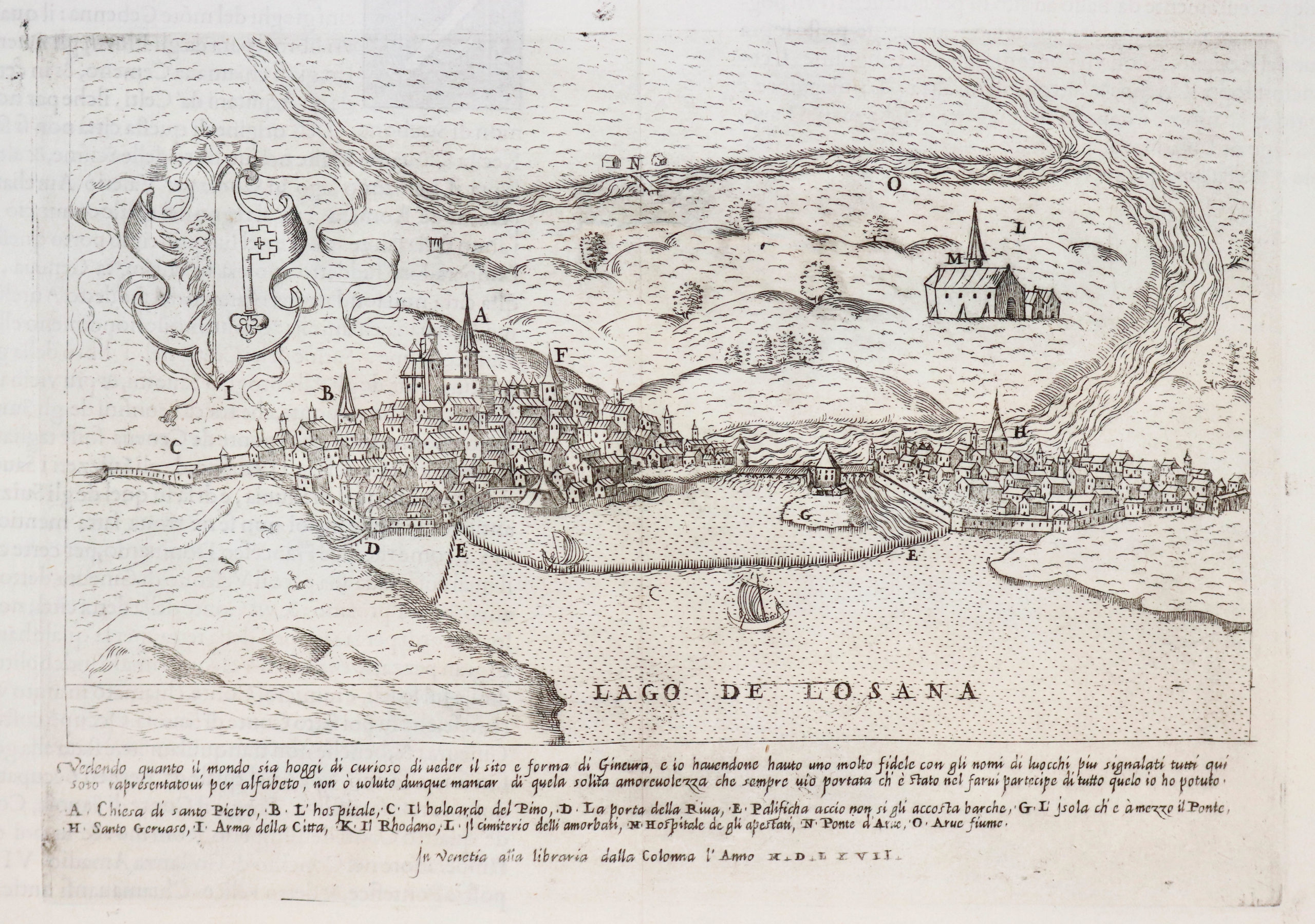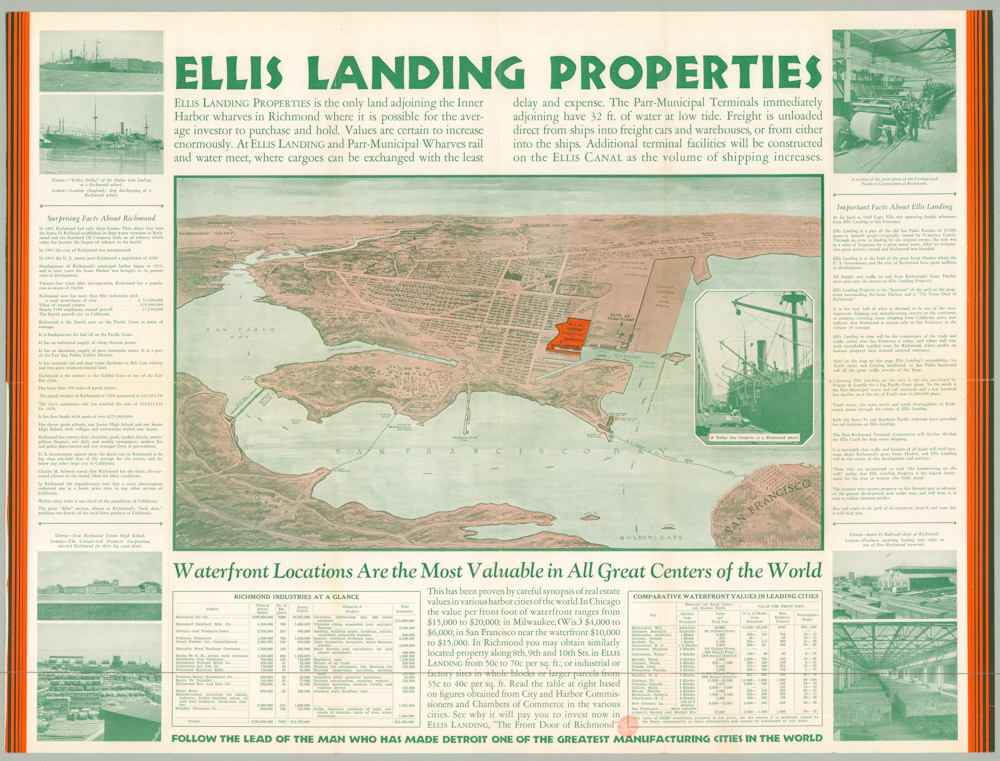1877 bird’s-eye-view of San Francisco with advertisements for German businesses.
Ansight von San Francisco 1877.
Out of stock
Description
Scarce and decorative bird’s-eye-view of San Francisco with local trade advertisements. The depicted city closely resembles the famous Graphic Chart of the City and County of San Francisco, published two years prior. Both views are slightly distorted to emphasize the area from North Beach to Rincon Point.
The view captures an era in which San Francisco developed into a major maritime commercial center. The wild and explosive days of the Gold Rush have past, but the 1860s and 1870s were an exciting time in their own right, as the city began to feature the hallmarks of both high society and urban industrial production. In exceptional detail, Ansight von San Francisco depicts the individual elements of San Francisco’s past, present, and future.
Situated prominently on the south side of Market St., with a blue rooftop, we see the original Palace Hotel, which opened two years before this view was published. With 755 guest rooms, the original Palace Hotel was at the time of its construction the largest hotel in the Western United States. It was built by San Francisco banker and entrepreneur William Chapman Ralston, who heavily depended on his shaky banking empire to finance the five million dollar project. Although Ralston’s Bank of California collapsed in late August 1875, and Ralston himself drowned in San Francisco Bay on the same day that he lost control of the institution, the Palace Hotel still opened two months later on October 2, 1875.
The hotel survived the initial damage from the early morning April 18, 1906, San Francisco earthquake, by late that afternoon it had been consumed by the subsequent fires.
A few blocks to the left is the famous Selby Shot Tower, a symbol of San Francisco’s growing skyline and industry. Moving further south to Mission Bay we see a critical but often over-looked structure that played a key role in shaping San Francisco as we know it today: Long Bridge. Construction on Long Bridge began in 1865 in anticipation of the arrival of the Transcontinental Railroad. The bridge stretched over Mission Bay marshlands to Hunter’s Point and the ornate Bayview Racetrack there. Long Bridge followed the same line as today’s Third St. and its success had a damaging effect on the natural landscape, enclosing much of Mission Bay, which would eventually be in-filled.
On the southern side of Mission Bay we see the Tubbs Cordage Company, which was founded during the Gold Rush, and which produced the first commercially-manufactured rope west of the Mississippi. Nearby, on a small promontory jutting out into the Bay, is evidence of San Francisco’s important iron manufacturing industry: Potrero Hill’s Pacific Rolling Mill Company, the first iron-producing factory in the West. Moving to the right across Mission Bay, at 8th and Brennan Streets, is an illustration of the Spreckels California Sugar Refinery. Ships filled with sugar cane from Hawaii would pull right up to the company dock.
Moving north, to today’s Cow Hollow/Marina District, we see Washerwoman’s Bay, a freshwater lagoon located around present-day Lombard, Filbert, Gough, and Octavia Streets. This became the site of a lucrative laundry industry until it became over-used and polluted, leading to several cases of cholera. The same year this view was published, the lagoon was filled in by prisoners from the local jail.
Finally, this view offers a fascinating depiction of the west side of the city in its natural state of wind-swept sand dunes. This depiction stands in sharp contrast to most other contemporary maps of the city, which show a street grid already covering today’s Richmond and Sunset districts. This view reveals the reality of how deserted the west side was even in the latter part of the 19th century. We see the outlines of Golden Gate Park, largely in isolation.
For more: A detailed look at some of the features found on an 1877 bird’s-eye-view of San Francisco.
Cartographer(s):
Philo Jacoby’s “California State Almanac” was published in German and featured a variety of German-themed advertisements.
Condition Description
Backed on acid free linen for long term preservation. Various minor blemishes.
References
Woodbridge, Sally Byrne., and David Rumsey. San Francisco in maps and views. New York: Rizzoli International Publications, 2009, p. 85.
